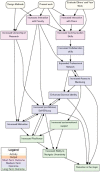Assessment of course-based undergraduate research experiences: a meeting report
- PMID: 24591501
- PMCID: PMC3940459
- DOI: 10.1187/cbe.14-01-0004
Assessment of course-based undergraduate research experiences: a meeting report
Abstract
The Course-Based Undergraduate Research Experiences Network (CUREnet) was initiated in 2012 with funding from the National Science Foundation program for Research Coordination Networks in Undergraduate Biology Education. CUREnet aims to address topics, problems, and opportunities inherent to integrating research experiences into undergraduate courses. During CUREnet meetings and discussions, it became apparent that there is need for a clear definition of what constitutes a CURE and systematic exploration of what makes CUREs meaningful in terms of student learning. Thus, we assembled a small working group of people with expertise in CURE instruction and assessment to: 1) draft an operational definition of a CURE, with the aim of defining what makes a laboratory course or project a "research experience"; 2) summarize research on CUREs, as well as findings from studies of undergraduate research internships that would be useful for thinking about how students are influenced by participating in CUREs; and 3) identify areas of greatest need with respect to CURE assessment, and directions for future research on and evaluation of CUREs. This report summarizes the outcomes and recommendations of this meeting.
Figures


References
-
- Adedokun OA, Bessenbacher AB, Parker LC, Kirkham LL, Burgess WD. Research skills and STEM undergraduate research students’ aspirations for research careers: Mediating effects of research self efficacy. J Res Sci Teach. 2013;50:940–951.
-
- Albanese M, Dottl S, Mejicano G, Zakowski L, Seibert C, Van Eyck S. Distorted perceptions of competence and incompetence are more than regression effects. Adv Health Sci Educ. 2006;11:267–278. - PubMed
-
- Alexander BB, Foertsch J, Daffinrud S, Tapia R. The Spend a Summer with a Scientist (SaS) Program at Rice University: a study of program outcomes and essential elements, 1991–1997. Counc Undergrad Res Q. 2000;20:127–133.
-
- Alkaher I, Dolan EL. 2014. Integrating research into undergraduate courses: current practices and future directions. In: Research in Science Education: Research Based Undergraduate Science Teaching, ed. D Sunal, C Sunal, D Zollman, C Mason, and E Wright (in press)
-
- American Association for the Advancement of Science. Vision and Change in Undergraduate Biology Education. Washington, DC: 2011.
Publication types
MeSH terms
Grants and funding
LinkOut - more resources
Full Text Sources
Other Literature Sources

